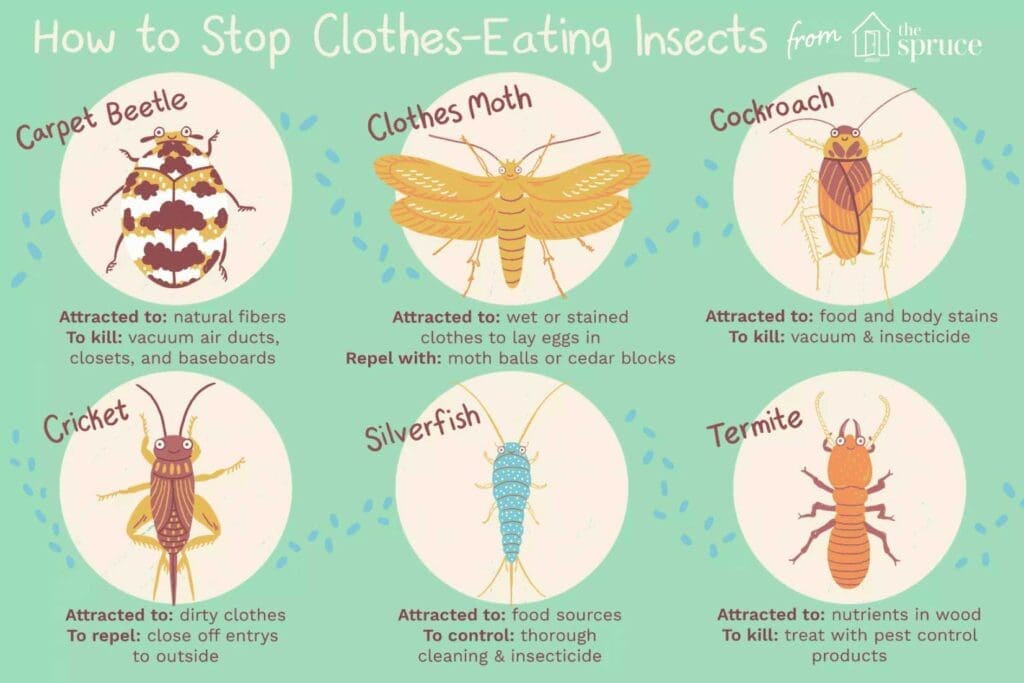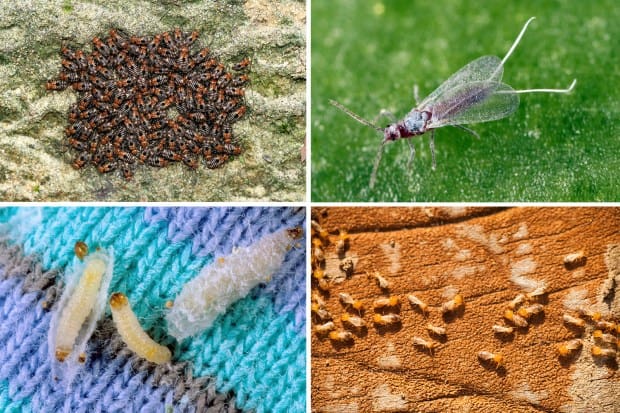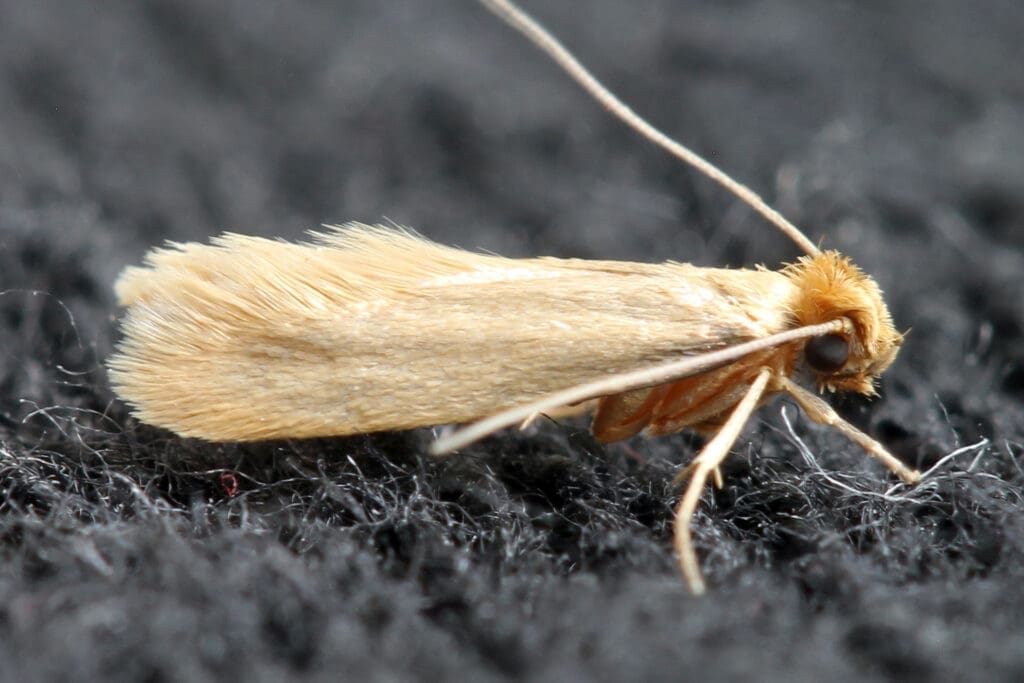Have you ever wondered about the fascinating intersection between pests and the world of fashion? In this article, we will explore the unusual relationship between these two seemingly unrelated realms. From the destructive impact of pests on fabrics to the innovative ways that fashion designers incorporate pests into their designs, we will uncover the intriguing connection between these unlikely bedfellows. Whether you have a passion for fashion or a curious mind, join us on this captivating journey into the world of pests and fashion.

1. Pests that affect the fashion industry
1.1 Clothes Moths
Clothes moths are small, winged insects that feed on natural fibers such as wool, silk, and cashmere. They are attracted to the protein in these materials and can cause significant damage if left unchecked. Their larvae, commonly known as woolly bears, spin silk cocoons and feed on the fibers of clothing, leaving behind unsightly holes. Clothes moths are often found in dark, undisturbed areas such as closets and storage boxes.
1.2 Carpet Beetles
Carpet beetles are another common pest that affects the fashion industry. These tiny insects feed on natural fibers, as well as synthetic materials like polyester and rayon. They can cause damage by chewing through fabric and leaving behind holes. Carpet beetles are often found in homes and businesses with carpeting, but they can also infest clothing and other stored items.
1.3 Silverfish
Silverfish are small, wingless insects that are attracted to starches and sugars found in clothing, glue, and paper. While they don’t directly damage clothing, they can cause stains and discoloration from their excrement. Silverfish are agile and can squeeze into tight spaces, making it difficult to eliminate them once they have infested an area.
1.4 Cockroaches
Cockroaches may not be the first pest that comes to mind when thinking about the fashion industry, but they can cause significant damage to stored clothing and accessories. Cockroaches are attracted to the food residue often found on clothing, and they will chew through fabric to get to it. Their droppings can also stain clothing and cause an unpleasant odor.
2. Impact of pests on fashion materials
2.1 Damage to natural fibers
Pests such as clothes moths and carpet beetles pose a significant threat to fashion items made from natural fibers. These pests feed on the protein found in materials like wool and silk, causing irreparable damage to the fabric. Once a garment is infested, it may need to be discarded or professionally treated to remove the pests and prevent further damage.
2.2 Destruction of synthetic materials
While pests may have a preference for natural fibers, they can also damage synthetic materials. Carpet beetles, for example, can chew through polyester and rayon, leading to holes and tears in clothing. Synthetic materials aren’t immune to pest damage, so it’s important to take preventive measures to protect all types of fashion materials.
2.3 Stains and discoloration
In addition to physical damage, pests like silverfish can cause stains and discoloration on clothing. Their excrement contains substances that can permanently stain fabric, leaving behind unsightly marks. These stains can be difficult to remove, and in some cases, they may be impossible to fully eliminate, diminishing the value and appeal of the affected fashion items.

3. Protecting fashion items from pests
3.1 Proper storage and organization
One of the most effective ways to protect your fashion items from pests is to store them properly. Use airtight containers or garment bags to prevent pests from accessing your clothing. Ensure that all items are clean and dry before storing them, as pests are attracted to food residue and moisture. Additionally, consider using cedar blocks or lavender sachets in your storage areas, as these natural deterrents can help repel pests.
3.2 Regular cleaning and maintenance
Regular cleaning and maintenance of your fashion items are essential for pest prevention. Clean clothing according to the manufacturer’s instructions, and pay special attention to items that have been stored for long periods. Dry cleaning can also help eliminate any pests or eggs that may be present. Additionally, inspect your clothing regularly for signs of pest damage, such as holes or stains, and address any issues promptly.
3.3 Use of mothballs and insect repellents
Mothballs and insect repellents can be effective tools for pest prevention in the fashion industry. Mothballs, which contain a chemical called naphthalene, release a vapor that repels moths and other fabric pests. However, it’s important to use mothballs with caution, as they can be toxic if ingested or inhaled. Consider using natural alternatives such as cedar chips or essential oils, which can also help deter pests.
4. Pest control methods in the fashion industry
4.1 Integrated Pest Management (IPM)
Integrated Pest Management (IPM) is a comprehensive approach to pest control that involves identifying the pest, monitoring its population, and implementing targeted control measures. In the fashion industry, IPM can be used to prevent and eliminate pests without relying solely on chemical treatments. This method focuses on using a combination of preventive measures, physical controls, and biological controls to manage pests effectively.
4.2 Natural and organic pest control
Many fashion retailers are turning to natural and organic pest control methods to protect their inventory. These methods involve the use of non-toxic substances, such as essential oils or plant extracts, to repel or kill pests. Natural pest control products are often considered safer for both humans and the environment, making them an attractive option for sustainable fashion brands.
4.3 Professional pest control services
In some cases, professional pest control services may be necessary to address a severe infestation or prevent future pest problems. Pest control experts have the knowledge and tools to identify and eliminate pests effectively. They can assess the specific needs of the fashion industry and provide tailored solutions to protect valuable inventory. Regular inspections and treatments can help ensure a pest-free environment for fashion retailers.

5. Prevention and pest control tips for fashion retailers
5.1 Store layout and design considerations
Fashion retailers can take proactive measures to prevent pests by considering their store layout and design. Avoid creating dark, undisturbed areas where pests can thrive. Ensure that storage areas are well-lit and have proper ventilation to discourage pests. Additionally, implement regular cleaning routines and train staff on pest prevention practices to maintain a clean and pest-free environment.
5.2 Effective stock rotation and inventory management
Proper stock rotation and inventory management are key to preventing pest infestations in the fashion industry. Regularly inspect and remove outdated or unsellable items from your inventory to minimize the risk of attracting pests. Implement a first-in, first-out (FIFO) system to ensure that older stock is sold before newer items, reducing the chances of garments sitting in storage for extended periods.
5.3 Regular inspections and monitoring
Regular inspections and monitoring are essential for early detection of pests in a fashion retail setting. Train staff to look out for signs of pest activity, such as droppings, webbing, or damage to clothing. Set up monitoring devices, such as sticky traps or pheromone traps, in high-risk areas to track pest populations. Prompt action can prevent a minor pest problem from turning into a major infestation.
6. The role of pest control in sustainable fashion
6.1 Minimizing chemical treatments
In the world of sustainable fashion, minimizing chemical treatments is a priority. Chemical pesticides can have harmful effects on both human health and the environment. By implementing preventative measures and utilizing alternative pest control methods, fashion brands can minimize their reliance on chemical treatments while still protecting their inventory from pests.
6.2 Eco-friendly packaging and storage solutions
Eco-friendly packaging and storage solutions can also play a role in pest control in sustainable fashion. By using packaging materials made from natural or recycled materials, fashion brands can reduce the risk of pest infestations during storage and transportation. Implementing environmentally friendly storage solutions, such as sealed containers made from sustainable materials, can further enhance pest prevention efforts.
6.3 Collaboration with pest control experts
Sustainable fashion brands can benefit from collaborating with pest control experts who specialize in eco-friendly and non-toxic pest control solutions. These experts can provide valuable insights and recommendations tailored to the specific needs of the fashion industry. By working together, fashion brands and pest control experts can develop strategies that prioritize sustainability and pest prevention.

7. Common myths and misconceptions about pests in the fashion world
7.1 Myth: Pests only target dirty or neglected clothes
Contrary to popular belief, pests do not discriminate based on cleanliness. In fact, Pests such as clothes moths and carpet beetles are attracted to natural fibers and food residue, regardless of the cleanliness of the garment. It’s important to take preventive measures and regularly clean and inspect clothing to minimize the risk of pest infestations.
7.2 Myth: Mothballs are the most effective solution for pest prevention
While mothballs have been traditionally used to deter pests, they are not the only or most effective solution for pest prevention. Mothballs contain chemicals that can be toxic and should be used with caution. There are many safer and more eco-friendly alternatives, such as cedar chips or essential oils, that can effectively repel pests without the associated risks.
7.3 Myth: Natural fibers are immune to pest damage
While it’s true that pests have a preference for natural fibers, they can still cause significant damage to these materials. Clothes moths and carpet beetles, in particular, are known to feed on natural fibers such as wool and silk, leading to holes and other damage. No material is completely immune to pest damage, so it’s important to remain vigilant and take preventive measures regardless of the fabric type.
8. Case studies: Famous fashion disasters caused by pests
8.1 The Great Moth Infestation of Fashion Week
In a shocking turn of events, a prestigious fashion week event was disrupted by a massive moth infestation. Despite rigorous cleaning measures, the moths managed to infiltrate the venue and wreak havoc on the designer clothing. Expensive garments were left riddled with holes, forcing last-minute replacements and costly repairs. This incident served as a wake-up call for the fashion industry, highlighting the importance of effective pest control measures.
8.2 Bug Invasion at a High-End Boutique
A high-end boutique known for its luxurious fashion offerings fell victim to a bug invasion that threatened to tarnish its reputation. Carpet beetles made their way into the store, wreaking havoc on the meticulously curated inventory. The discovery of damaged clothing prompted an immediate closure for thorough cleaning, resulting in financial losses and a blow to the boutique’s image. This incident emphasized the need for proactive pest control measures to protect valuable fashion items.
8.3 Celebrity Wardrobe Malfunction Due to Pests
Even celebrities aren’t immune to the damaging effects of pests in the fashion world. A well-known actress suffered a wardrobe malfunction during a red carpet event when a silverfish left behind a noticeable stain on her designer gown. The incident garnered significant media attention, highlighting the importance of pest prevention and proper garment care for celebrities and fashion-conscious individuals alike.
9. Expert tips for DIY pest control in the fashion industry
9.1 Identifying common pests and their habits
Educate yourself on common fashion pests and their habits to effectively prevent and address infestations. Learn to recognize the signs of pest activity, such as holes, webbing, or stains, and take immediate action if you suspect an infestation. Understanding the lifecycle and behavior of pests can help you implement targeted pest control measures.
9.2 Non-toxic home remedies for pest control
Consider using non-toxic home remedies for pest control in the fashion industry. For example, freezing infested items for several days can kill clothes moths and their larvae. Vacuuming your storage areas regularly can also remove eggs and larvae from the environment. Additionally, natural deterrents such as cedar chips or essential oils can help repel pests without the use of harmful chemicals.
9.3 Safe handling and disposal of infested items
If you discover an infestation in your fashion items, it’s important to handle and dispose of them safely. Seal the infested items in plastic bags to prevent the spread of pests, and consider discarding heavily damaged items. Launder or dry clean unaffected clothing to eliminate any remaining pests or eggs. Always follow proper disposal procedures to prevent infestations from spreading to other areas.
10. Innovative pest control solutions for the fashion industry
10.1 High-tech fabric treatments
Advancements in technology have led to the development of high-tech fabric treatments that repel pests. These treatments can be applied to fashion items during the manufacturing process, making them resistant to pest damage. By incorporating pest-repellent properties into the fabric itself, fashion brands can provide added protection for their products.
10.2 Pest-repellent textiles
Innovative textiles are being designed with pest-repellent properties to protect fashion items. These textiles are embedded with natural or synthetic substances that repel or kill pests on contact. By incorporating these pest-repellent textiles into their products, fashion brands can offer customers added peace of mind and prolong the lifespan of their garments.
10.3 Smart pest monitoring systems
Smart pest monitoring systems utilize technology to detect and track pest activity in real-time. These systems can be integrated into fashion retail spaces and provide immediate alerts when pests are detected. By investing in smart pest monitoring systems, fashion retailers can take a proactive approach to pest control and minimize the risk of infestations that can damage their inventory.
In conclusion, pests pose a significant threat to the fashion industry, causing damage to both natural and synthetic materials. However, through proper storage and organization, regular cleaning and maintenance, and the use of preventive measures such as mothballs and insect repellents, fashion items can be protected from pests. Additionally, implementing integrated pest management strategies, exploring natural and organic pest control methods, and collaborating with pest control experts can help fashion retailers maintain a pest-free environment. By debunking common myths and sharing expert tips, fashion brands can better educate themselves and their customers on effective pest control in the industry. Finally, advancements in technology have opened up innovative pest control solutions, such as high-tech fabric treatments, pest-repellent textiles, and smart pest monitoring systems, which can further enhance pest prevention efforts in the fashion industry.

I am Randy, the author behind PestControld.com. Drawing from decades of experience, I aim to provide valuable insights, expert advice, and practical recommendations to help you make informed decisions when assessing viable pest control solutions.
